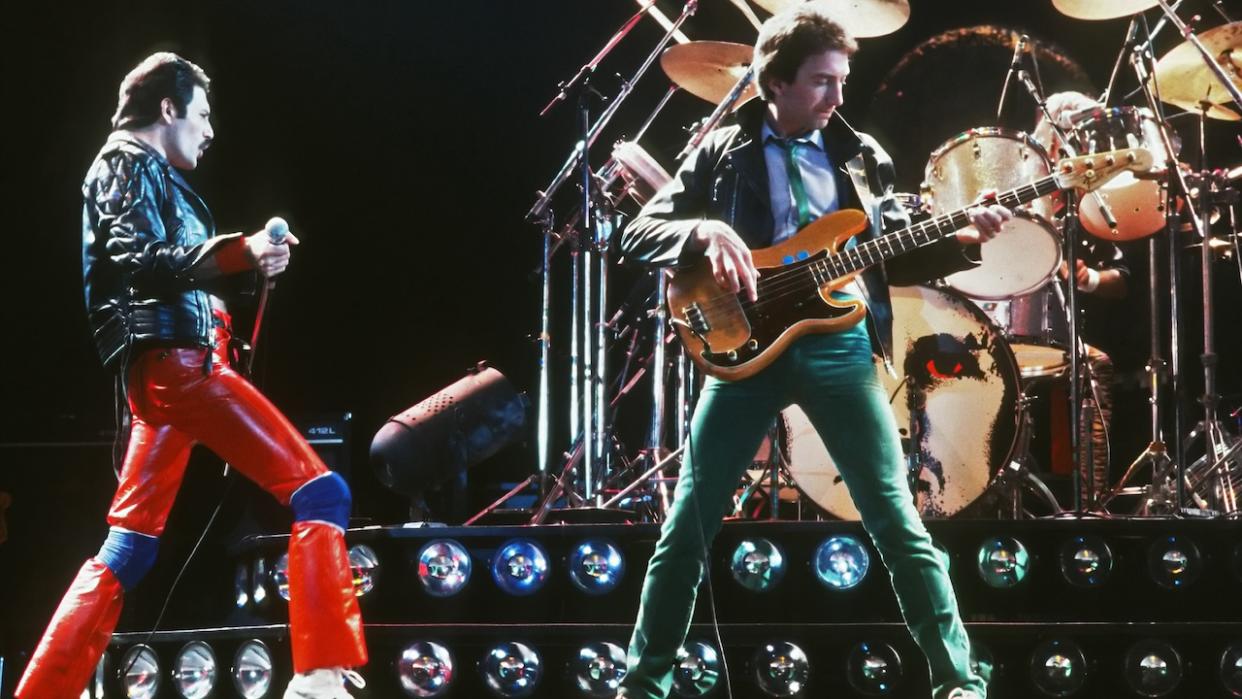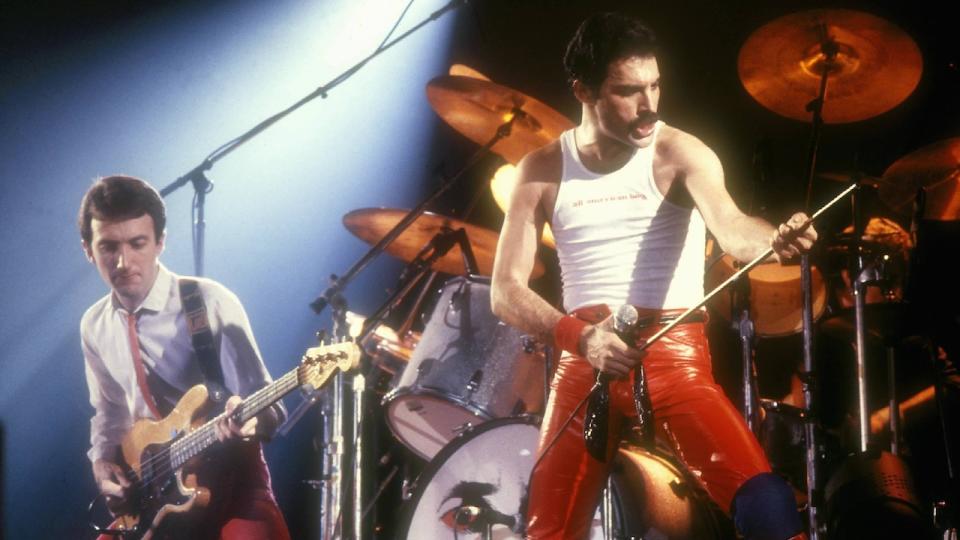“When the bass comes back in it’s like a punch in the face. Nobody plays like that anymore”: Listen to John Deacon’s isolated bassline on Killer Queen

- Oops!Something went wrong.Please try again later.
- Oops!Something went wrong.Please try again later.
- Oops!Something went wrong.Please try again later.
Queen formed in 1970 and, once joined by John Deacon in February 1971, they began to progress into the juggernaut we know today. Two of Mr Deacon’s best known basslines, Under Pressure and Another One Bites The Dust, can be found in our 40 best basslines of all time poll, at numbers 30 and 7 respectively.
With a powerful blend of pop, prog, and pomp, Queen are renowned for a metal-meets-vaudeville songwriting and performance style. But that wasn't the case prior to 1974, when the group's third album, Sheer Heart Attack, introduced the young quartet's masterful songwriting capabilities through Killer Queen, the first of several huge international hits.
Soon after, rock fans worldwide would place guitarist Brian May and singer/pianist Freddie Mercury among rock royalty – but what about bassist John Deacon and drummer Roger Taylor? According to one expert, they were among the best in the business.
“Roger is absolutely the musical instigator of that band,” said bassist Danny Miranda, who toured with Queen + Paul Rodgers in 2005, stepping in for the retired and reclusive Deacon, while former Free and Bad Company singer Rodgers filled in for Mercury, who died in 1992.
“Roger dictates the feels and the tempos, and he's a powerhouse – probably the loudest drummer I've ever played with.”
As for Deacon? “Grossly underrated. His bass parts are like little stories, yet he never gets in anyone's way. With all the guitars and vocals going on, he finds the spaces and plays basically what he wants. He's loose. fluid, and quite busy at times, but I can't find one song where he stepped on the vocal or guitar parts.”
Miranda, whose resumé includes an appearance on the 2005 Queen + Paul Rodgers live album, Return of the Champions, knows Deacon’s parts extremely well, since he also played with the Las Vegas production of We Will Rock You, a cosmic play based around Queen's music.
Speaking to Bass Player, he described Killer Queen as a mini-masterpiece. “They get in so much information within a few minutes. There's very little guitar in the beginning, but the song grows dynamically with the guitar getting more prominent and the bass opening up in the second verse, Its like you're reading a book that gradually gets to the good part.”
Killer Queen is in 12/8 – like 4/4, but with a triplet feel – and it begins with Deacon laying out as steady piano chords accompany the first two lines of the first verse. Then, with a luscious P-Bass tone and a tasty pentatonic fill, Deacon ushers in the band as the verse phrasing accelerates.
For the next four bars it's a quarter-note walking feel with careful attention to note duration. “That's what I took the most time on – the length of these notes," said Miranda, explaining how he reproduced Deacon's feel. “The verses have to breathe. If a note sustains too much or too little, it changes the feel.”
You can revisit Deacon's isolated bassline below.
Bar 11 momentarily cuts the count in half, with Deacon's fill leading to the three-bar pre-chorus, where he outlines Mercury's tidy chord progression with root notes in a two-feel. The clipped G and F, on the second half of bar 14, leads nicely into the asymmetrical eight-bar chorus, with its five-plus-three phrasing.
Bar 18's four-beat walk-up leads to a mini-climax in the next bar, with Deacon reaching high to catch the unison rhythm. Deacon sits out for nearly the first two bars of the guitar interlude.
“That space creates an incredible crater,” said Miranda. “So when the bass comes back in it's like a punch in the face. Nobody does this anymore; everyone's afraid to stop playing. But I think it's ballsy as hell, because everybody's going to pay attention to the next thing you play.”
In this case it's a steep, two-octave slide from a high F on the G string to low F on the E string, then working back up melodically to a held high C at the start of the second verse. “Deacon plays very staccato at times, almost like a McCartney vibe, which enables him to play a bit more busy under Brian's sustained chords.”
After hanging back with sustained notes at the top of the verse, Deacon enters the fray with the same pentatonic fill as in bar 6, then goes back into the walking feel. Miranda says Deacon's upper-register fill in bar 38 is his favorite part.
“Who would think of playing that, and then afterward not continuing to play that busy? He just makes a statement in those two bars and gets back to laying it down. It makes you want to follow the bouncing ball of the bass.”
At the end of the second chorus, Deacon plays the chorus-ending riff in double-stop 5ths, though he doesn't do it the first or third time through. “He's not one to do something cool and repeat it.”

Following the second chorus, check out the question-and-answer hits with the drums. Deacon's interplay with Roger Taylor marks the song's dynamic climax. Miranda emphasizes the importance of focusing on the feel and placement of the bass in the song.
“The piano is the core, but it's not very big-sounding, and there's quite a busy vocal, too. Deacon was very careful about where the bass lies and the kind of space it takes up, how it breathes against the snare, and when to open up.”
He's also quick to compare Deacon to his other great bass hero, Led Zeppelin's John Paul Jones. “Much like JPJ, Deacon was surrounded by monster musicians, but really cut a niche for himself. He's very much a support instrument, but in a way that opens up sonic barriers to make everyone else shine.”

